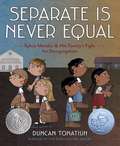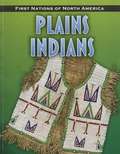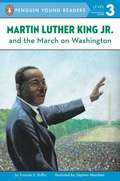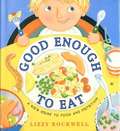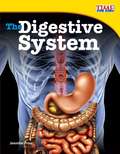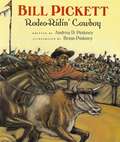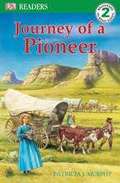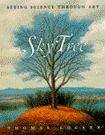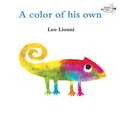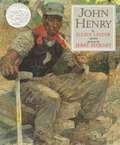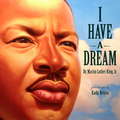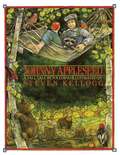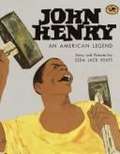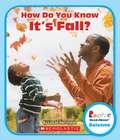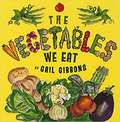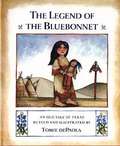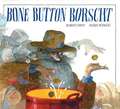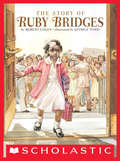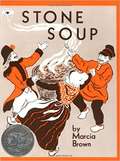Special Collections
District List: BCPS Core Text Lists – Grade 2
Description: Baltimore City Public Schools Core Text List for students in 2nd Grade. Contains books from Modules: A Season of Change, The American West, Civil Rights Heroes, and Good Eating. #bcps
- Table View
- List View
Separate Is Never Equal
by Duncan Tonatiuh
Almost 10 years before Brown vs. Board of Education, Sylvia Mendez and her parents helped end school segregation in California.
An American citizen of Mexican and Puerto Rican heritage who spoke and wrote perfect English, Mendez was denied enrollment to a "Whites only" school.
Her parents took action by organizing the Hispanic community and filing a lawsuit in federal district court.
Their success eventually brought an end to the era of segregated education in California.
2015 Jane Addams Younger Reader Award,
2015 Pura Belpré Illustrator Honor Book
2015 Robert F. Sibert Honor Book
The Digestive System
by Christine Taylor-ButlerAn introduction to the digestive system. This book introduces readers (Grades 3-5) to the digestive system, including the digestive process, the organs involved in digestion, and common problems and diseases associated with the digestive system.
Plains Indians
by Andrew SantellaThis title teaches readers about the first people to live in the Plains region of North America. It discusses their culture, customs, ways of life, interactions with other settlers, and their lives today.
Martin Luther King Jr. and The March on Washington
by Frances E. RuffinOn August 28, 1963, more than 250,000 people came to the nation's capital. They came by plane, by bus, by car--even on roller-skates--to speak out against segregation and to demand equal rights for everyone. They also came to hear the words of a very special leader, Martin Luther King, Jr. Told with a wonderful immediacy, this book captures the spirit of this landmark day in American history and brings Dr. King's "I Have a Dream" speech to vivid life for young children.
Good Enough To Eat
by Lizzy RockwellGood Enough to Eat is one of a kind: the only guide to kids' nutrition written especially for kids. A practical, hands-on tool for families who want to eat a healthy diet, this book explains nutrition from carrots to cookies.
In this book, you will learn
- all about the nutrient groups--carbohydrates, protein, fat, water, vitamins, and minerals
- each nutrient's function
- which foods contain which nutrients
- how much of each nutrient a kid needs each day
- how the body digests food
- all about calories
Good Enough to Eat includes kid-friendly recipes such as Alphabread and Full o' Beans Soup, and even shows kids how to test their food for fat. Perfect for parents, educators, librarians, and doctors trying to explain healthy eating to kids!
The Digestive System
by Jennifer PriorDiscover the journey that your food takes through the digestive system in this fascinating nonfiction title! Featuring vivid diagrams and photos, fresh and informative text, and stimulating facts, readers will be engaged from cover to cover.
Bill Pickett
by Andrea Davis Pinkney and Brian PinkneyThe true sweat-and-dirt tale of the feisty cowboy-child who became the most famous black rodeo performer who ever lived. Includes a note about the history of the black West and a bibliography.
Journey of a Pioneer
by Patricia J. MurphyAn epic journey with this historic book about the lives of the pioneers. They'll follow Olivia and her family as they travel along the Oregon Trail. Discover what it was like to live in a wagon and sleep under the stars. Learn what the pioneers ate and how they found food.
Why Do Leaves Change Color?
by Betsy MaestroExplains how leaves change their colors in autumn and then separate from the tree as the tree prepares for winter.
Sky Tree
by Thomas LockerA tree stands on a hill by a river. As the sky changes, so does the tree, its branches filling with clouds, stars, snow, birds, mists, and the golden spring sun. One tree can mean many things. Thomas Locker's lyrical text records the changes in the tree's world just as simply as a child might observe them, and his magnificent paintings crystallize the natural phenomena that embellish the tree on each page. Questions at the bottom of each page lead to a unique discussion in the back of the book, where art and science are intertwined, and further depth is added to the wonder of Sky Tree.
A Color of His Own
by Leo LionniA little chameleon is distressed that he doesn't have his own color like other animals.
John Henry
by Julius LesterJohn Henry is stronger than ten men, and can dig through a mountain faster than a steam drill. Julius Lester's folksy retelling of a popular African-American folk ballad has warmth, tall tale humor, and boundless energy.
Jerry Pinkney illustrates the story with "rich colors borrowed from the rocks and the earth, so beautiful that they summon their own share of smiles and tears" (Booklist).
Caldecott Honors Book
I Have a Dream
by Kadir Nelson and Martin Luther King Jr.On August 28, 1963, on the steps of the Lincoln Memorial during the March on Washington, Martin Luther King gave one of the most powerful and memorable speeches in our nation's history. His words, paired with Caldecott Honor winner Kadir Nelson's magificent paintings, make for a picture book certain to be treasured by children and adults alike. The themes of equality and freedom for all are not only relevant today, 50 years later, but also provide young readers with an important introduction to our nation's past.
Johnny Appleseed
by Steven KelloggSteven Kellogg retells the larger-than-life story of a true American hero -- John Chapman, better known as Johnny Appleseed.
John Henry
by Ezra Jack KeatsThe larger-than-life character of John Henry and his incredible strength provide readers with a special introduction to the fantasy element of legend. The rewards of hard physical labor are also described in this exciting adventure of man vs. machine.
How Do You Know It's Fall?
by Lisa M. HerringtonThese charming science books, written for the youngest readers, will teach children how to read the cues from nature and be able to differentiate one season to the next. Simple hands-on experiments that introduce young readers to everyday science Fun activities that allow young scientists to make observations about the world around them Fast facts - offering fun, sometimes little known facts about the subject Low, accessible reading level for emergent and struggling readers Glossary with pictures provides a visual review of important vocabulary terms Additional content for further learning on this subject available at www. factsfornow. scholastic. com
The Vegetables We Eat
by Gail GibbonsGlossy red peppers, lush leafy greens, plump orange pumpkins, and delectable little peas: vegetables come in many shapes, sizes, and colors. Leaf. . .root. . .stem. . . . These are three of the eight groups of vegetables. From how they are planted to how they get to stores, here is a wealth of information about them, including how to plant and tend your own vegetable garden.
This book does not contain images, only image descriptions.
The Buffalo are Back
by Jean Craighead GeorgeThe buffalo, an American icon once nearly extinct, has made a comeback. This stirring picture book tells the dramatic story, following bison from the Plains Indians to the cowboys, Teddy Roosevelt to the Dust Bowl, and from the brink of extinction to the majestic herds that now roam our national parks.
The Legend of Bluebonnet
by Tomie DepaolaSummary: A retelling of the Comanche Indian legend of how a little girl's sacrifice brought the flower called bluebonnet to Texas.
Bone Button Borscht
by Dusan Petricic and Aubrey DavisOn a dark winter's night, a ragged beggar dreams of a warm hearth and a delicious meal -- and sets out to find just that. In this retelling of the classic folk tale "Stone Soup," a stranger teaches the poor villagers what can be accomplished with a few buttons and a little cooperation.
The Story of Ruby Bridges
by Robert ColesThe inspirational true story of Ruby Bridges.The year is 1960, and six-year-old Ruby Bridges and her family have recently moved from Mississippi to New Orleans in search of a better life. When a judge orders Ruby to attend first grade at William Frantz Elementary, an all-white school, Ruby must face angry mobs of parents who refuse to send their children to school with her. Told with Robert Coles' powerful narrative and dramatically illustrated by George Ford, Ruby's story of courage, faith, and hope continues to resonate more than 60 years later.
